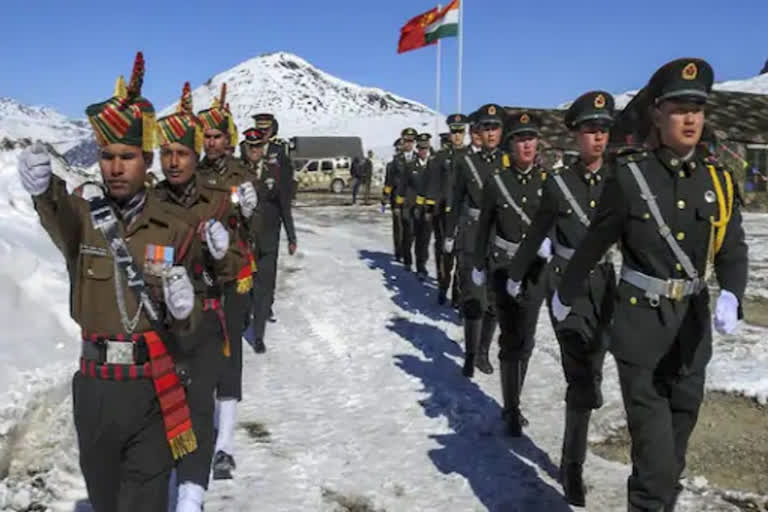New Delhi: A corps commander-level meeting will take place on the Indian side of Chushul-Moldo on Tuesday morning—the fourth time Lieutenant-General ranked officers of the world’s biggest armies will meet—since the escalation of the India-China border row from the beginning of May onwards.
A military source told ETV Bharat: “The meet will focus on deciding the modalities for further disengagement and re-location of troops in the area of friction.”
And like the previous three meetings, Tuesday’s meeting is also expected to last long into the night. It (July 14) will be the fourth meeting at this level after June 6, June 22 and June 30 that has been mandated to focus on ways and methods to disengage and de-escalate. On parallel lines, a diplomatic level negotiation has also been taking place.
The Indian army team will be led by Lt Gen Harender Singh, commander of the Leh-based 14 Corps, while the Chinese side would be led by delegation by Major General Lin Liu, commander of the South Xinjiang Military district.
Of the four major face-off flashpoints along the Line of Actual Control (LAC)—at Pangong lake (Finger 4), Galwan Valley (Patrol Point 14), Hot Springs (PP 15) and Gogra (PP 17)—the Indian Army and PLA soldiers have dropped back at least a km back from all faceoff points except the Finger 4 area on the northern bank of the Pangong lake.
A second military source said: “The main agenda points would be the Finger area, pullback of troops from the depth areas and completing the process of disengagement.”
India claims the LAC runs near Finger 8 on the northern bank of the Pangong Tso and that is the point to which its army foot-patrolled till the sparking off of the border row—the high point being a brutal physical brawl that resulted in the death of at least a score of soldiers in Galwan Valley on June 15.
Extending from west to east, Fingers 4 to 8 are spurs that jut out in a north-south direction from the mountains to the Pangong Lake.
Also read: Lt Col moves HC against Army's decision to ban officials from using social media platforms
While India had a border outpost on the left side of the Finger 4 ridge, China’s main posts were after Finger 8 near the Sirijap area. While PLA patrols in vehicles on a concrete road from Finger 8 to 4, Indian patrols were on foot from Finger 4 to 8.
What makes the Finger 4 impasse a difficult one is that PLA had dug in with semi-permanent pillbox-type structures besides big presence of troops along the ridgeline of Finger 4.
In the past, any confrontation was resolved with banner drills. But what was different this time is that the PLA installed infrastructure right up to Finger 4 and prevented Indian patrols beyond Finger 4.
“Both sides have ceased patrolling as tempers still run high particularly after the Galwan valley incident. Disengagement can be better managed by avoiding contact. Trust between the two sides still is a big issue,” the second official source added.
That is the reason why resolving the issue at Pangong Tso would be more difficult than the other faceoff points.
The other priority issue would be the pullback of men and material from the rear of the LAC faceoff flashpoints where both the Indian Army and the PLA had mobilised in considerable numbers and in strength. This would, of course, be a phased pullback because of the very nature of the mobilisation.



